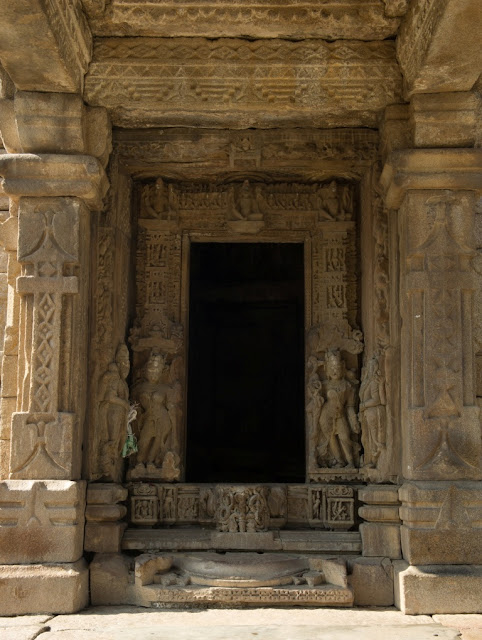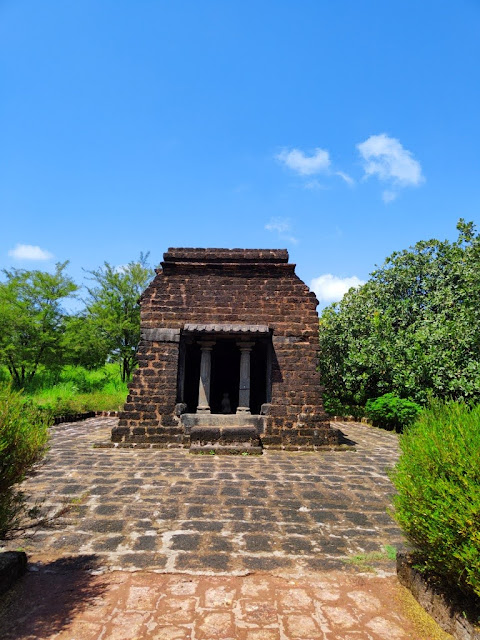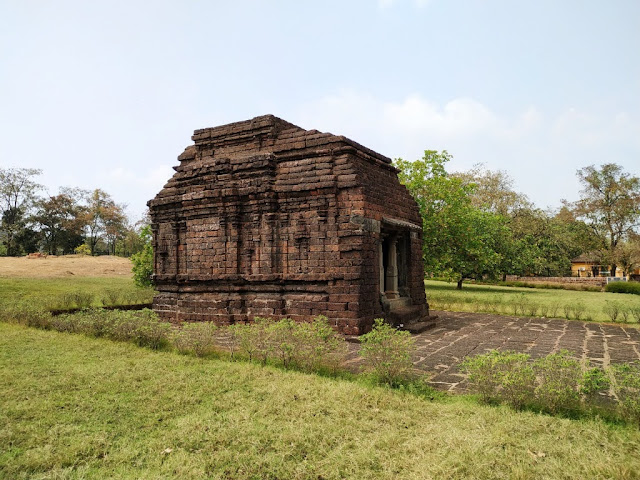Mallikarjuna Temple, Kuruvatti,
Karnataka
Mallikarjuna
Temple is a Hindu Temple dedicated to Lord Shiva located in Kuruvatti Village
in Hoovina Hadagali Taluk in Ballari District in the Indian state of Karnataka.
The temple is situated on the
banks of Tungabhadra river. The temple is protected as a monument of national
importance by the Archaeological Survey of India.
Legends
Mallikarjuna Swamy:
As per legend, Lord
Shiva killed the demons for the benefit of the world at this place. He revealed
himself in a form of Lingam and came to be called as Mallikarjuna Swamy.
Lord Nandi came here in search of Mallikarjuna Swamy, found him on the bank
of Tungabhadra River, sat in front of him and started worshiping him from
then on.
Kuruvathi:
As per legend, Lord Basaveshwara
(Nandi, mount of Lord Shiva) came here to heal the wounds (Kuru) of the
devotees. Hence, the place came to be called as Kuruvathi.
History
The temple was built in the 11th
century CE by Western Chalukyas and later was extensively renovated by
Hoysalas. As per the inscription dated to 1099 CE, the temple was constructed
in the memory of deceased Chalukya King Someshvara I who committed voluntary
suicide at Kuruvathi in 1062 CE. Lord Shiva of this temple came to be called as
Abhinava Someshvara / Ahavamallesvara / Trailokya Mallesvara after the deceased
king. The temple might have been constructed between 1070 and 1100 CE by the
King Vikramaditya VI, the heir apparent of the deceased Chalukya King
Someshvara I.





Most of the inscriptions are
dated to Western Chalukyan King Vikramaditya VI. Few of the inscriptions are
dated to Gutta Kings, feudatory rulers under the control of Western Chalukyas.
Kuruvathi was the abode of Lokabharana, the Rajaguru of Hoysala king Ballala II.
The chief queen of Ballala II, Padumaladevi, also made a grant at Kuruvathi to
god Ahavamallesvara. The village had been referred as Dakshina Varanasi in one
of the inscription.
The Temple
For
brief details, please refer below link;
https://hindutemples-india.blogspot.com/2023/02/mallikarjuna-temple-kuruvatti-temple.html
Festivals
The maha Rathotsava is
celebrated on Maha Shivaratri Amavasya (new moon) day during
February–March. Devotees from all over Karnataka and other nearby
states in India visit this place during this festival. The
Lord Nandi idol is kept inside the ratha and then it moves
based on the particular Nakshatra named Magha that match at
some point of time. This ratha does not move unless and
until Nakshatra matches Magha (nakshatra). Once
the Nakshatra is matched, devotees will pull the ratha.
Later when
the ratha starts moving, the devotees then offer flower garlands, coconuts
and banana fruits to the Lord Nandi ratha. Daily pujas are
conducted for the Lord Nandi. There are some special pujas performed
during the time of festivals and during Maha Shivaratri. Holige and ghee is
served as Naivedya to Lord Nandi. A special puja is performed to the
Lord Nandi and Mallikarjuna Swamy during the Kartika. The devotees
are provided with Prasadam (food) on the Amavasya (new moon) day of every month
which is provided by the devotees in form of Dana.
Connectivity
The temple is located at about 3 Kms from Mylara, 4 Kms
from Mylara Bus Stand, 13 Kms from Guttal, 13 Kms from Guttal Bus Stand, 15 Kms
from Halavagal, 31 Kms from Ranebennur Railway Station, 32 Kms from Ranebennur,
38 Kms from Harapanahalli, 40 Kms from Haveri, 40 Kms from Huvina Hadagali, 44
Kms from Harihar, 53 Kms from Davanagere, 126 Kms from Hubballi Airport and 168
Kms from Ballari. The temple is situated on Guttal to Halavagal route via
Mylara.
Location









.jpg)




















.jpg)
.jpg)
.jpg)

.jpg)















.jpg)
.jpg)
